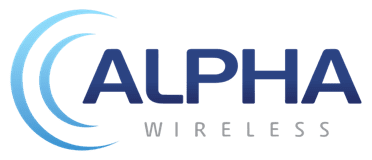CBRS has transformed the daunting pursuit of a device and application ecosystem founded on shared spectrum into a commercial reality. In 2020, it will take a profound step towards widespread deployment and adoption, while also continuing to upend global spectrum policy.
In this article, we will traverse the prospects for CBRS in the coming year, with a focus on the significance of upcoming auctions and emerging applications.
Affordable access to Licensed Spectrum in the CBRS Band
A watershed moment awaits CBRS in 2020 as the Federal Communications Commission (FCC) prepares to assign thousands of Priority Access Licenses (PALs) in what is anticipated to be a highly competitive bidding process. The first auction of 70 MHz of the spectrum is scheduled to commence June 25th.
Priority Access Licenses in Tier 2 (3550-3620 MHz) of the Spectrum Access System (SAS) are hugely compelling for operators of every scale by virtue of their affordability. There will be an opportunity to gain access to the licensed spectrum across a significant number of counties, and spectrum hoarding should be prevented by the 40 MHz per-county limit for any one operator.
Licensed spectrum in Tier 2 is afforded priority over General Authorised Access (GAA) in Tier 3 under the SAS, ensuring operators can deploy state-of-the-art wireless networks which meet stringent availability requirements.
The insatiable appetite for premium mid-band spectrum amongst US operators is expected to prevail in the CBRS auctions, creating a competitive process with a large and diverse array of bidders. With 150 MHz of spectrum available, operators will be eager to augment the capacity of their existing networks.
Fixed Wireless Access works to reduce the Digital Divide
As highlighted prominently in one of our earlier articles focused on CBRS, Fixed Wireless Access (FWA) is a prime use case for mobile operators and WISPs alike. The favourable signal propagation characteristics, combined with wide channel bandwidth, render CBRS uniquely suitable for wireless broadband deployments.
Indeed, much of the pent-up demand for mid-band spectrum in the US market has stemmed from the realisation that low (600, 700 MHz, etc.) and high-bands (mmWave) alone will be unable to support the required combination of wide-area coverage and massive capacity in the 5G NR era.
Continued advancement of techniques such as beamforming and Massive MIMO in the coming year will further enhance spectral efficiency and enable operators to compensate for higher path loss in the CBRS band (relative to lower frequencies).
This will make commercial deployment of CBRS for Fixed Wireless Access viable in more markets, where the band can be co-located on existing 4G LTE sites and aggregated with non-contiguous carriers to achieve greater throughput.
The utilisation of CBRS to wirelessly extend the footprint of fixed fibre networks will become more prolific in the year ahead. This is a potentially transformative development for both fixed and wireless operators, who can begin to cost-effectively grow their geographical and subscriber footprints to generate greater revenues.
For American consumers, the prospect of enhanced broadband in underserved rural areas is a welcome development. A reduction in the digital divide will ensure that connectivity is no longer a luxury, and opens the gateway to developments such as remote working, telemedicine and education at home.
Neutral Hosts herald a sea-change in wireless network design
The development of a shared spectrum ecosystem in the form of CBRS represents an opportune time for neutral hosts to deliver on the promises of low-cost and on-demand localised coverage and capacity.
In and of itself, the neutral host model is heralding a sea-change in how the industry approaches wireless network deployments. There is a new-found focus on developing bespoke cellular solutions to cater to the diverse connectivity requirements of specific venues and enterprise environments (both indoors and outdoors).
In 2020, the proliferation of CBRS small cells, along with work to achieve core network integration with mobile operators, will be important milestones on the path to neutral hosting. The beauty of CBRS is that neutral hosts will be able to compete for PAL licenses in Tier 2, while also dynamically exploiting unlicensed spectrum in Tier 3.
Conclusion: A Rosy Outlook for CBRS in 2020
The timely convergence of Priority Access License assignments, unwavering demand for mid-band spectrum and advancement of the device and application ecosystems paint a rosy outlook for CBRS in 2020. Consumers, operators and equipment vendors alike will be exposed, for the first time, to the real-world benefits of spectrum sharing.

Contributed by Cameron Kilton, Director Sales US Fixed Wireless
Cameron Kilton has more than 17 years of telecommunications industry experience with extensive knowledge in designing, building, and operating wireless broadband, cellular, AMI, and fiber-optic network systems.
Alpha Wireless Global Leader in CBRS
[/fusion_text][/fusion_builder_column_inner][/fusion_builder_row_inner][/fusion_builder_column][/fusion_builder_row][/fusion_builder_container]
